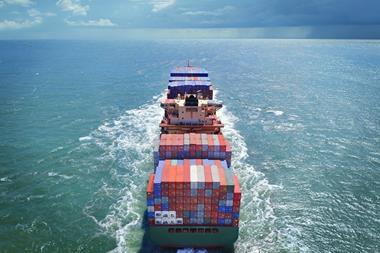This could trigger a host of secondary impacts, from civil unrest and political instability to mass migration and human rights abuses
Almost three quarters of the world’s current food production will face extreme risks from heat stress by 2045, jeopardising the health of outdoor workers and threatening the world’s supply of key crops, according to research from Verisk Maplecroft.
Within a generation, a combination of rising global temperatures and humidity will make outdoor working increasingly difficult and even life-threatening, with significant implications not only for the health of the agricultural labour force, but also for food production in major economies such as China, India, Brazil and the US.
“If emissions remain unchecked and temperatures continue to rise, extreme heat-related disruptions to global food supply chains will become increasingly common,” says Verisk Maplecroft’s head of Climate and Resilience Will Nichols.
“This will further raise prices, strain economies and push millions towards hunger.”
Indian agriculture already at boiling point
Extreme heat is a cross-cutting risk. It damages crops and lowers yields while triggering fatigue and nausea among outdoor workers, in turn lowering productivity and overall output.
These impacts are felt most acutely by countries where agriculture is heavily reliant on the productivity of outdoor labourers.
India, responsible for 12% of global food production in 2020, is by far the largest agricultural producer rated extreme risk for heat stress in the current climate – only Eritrea, Djibouti, Bangladesh, UAE, South Sudan, and Oman have a higher risk.
And this exposure is already impacting global food security: in May 2022 a heatwave scorched India’s harvests, prompting Delhi to impose a ban on wheat exports.
The decision was a blow to the international community, who had looked to India – the world’s second largest wheat producer – to fill the supply gap caused by Russia’s invasion of Ukraine.
While developing markets are set to bear the brunt under future climate conditions, rising heat stress is a growing issue for agriculture the world over.
Social unrest and other ripple effects
When comparing rankings under current and future climate conditions, Europe accounts for seven of the 10 countries set to see the largest increase in risk by mid-century.
The US, the world’s top agricultural exporter, and China, the world’s largest agricultural producer, will both be extreme risk for heat stress by 2045. But these countries are vast, and heat stress impacts will vary from state to state and province to province.
Rising temperatures will place additional strain on global food supply chains that are already reeling from the dual impacts of the pandemic and Russia’s invasion of Ukraine.
This could trigger a host of secondary impacts, from civil unrest and political instability to mass migration and human rights abuses, with developing and emerging markets on the frontline.
But, as shown by Europe’s intense summer heatwave, which sparked wildfires in Spain, France and the UK, governments and businesses everywhere need to factor the immediate and secondary impacts of exceptionally high, and rising, temperatures into their resilience planning.
Have your say and take part in our climate change survey. Results will be published in our special report at the end of September
Putin exposed as Ukrainian forces recapture more territory
- 1
- 2
- 3
- 4
- 5
- 6
- 7
 Currently reading
Currently readingHeat stress to threaten over 70% of global agriculture by 2045
- 8
- 9
- 10
- 11
- 12
- 13
- 14
- 15
- 16
- 17
- 18
- 19






































No comments yet